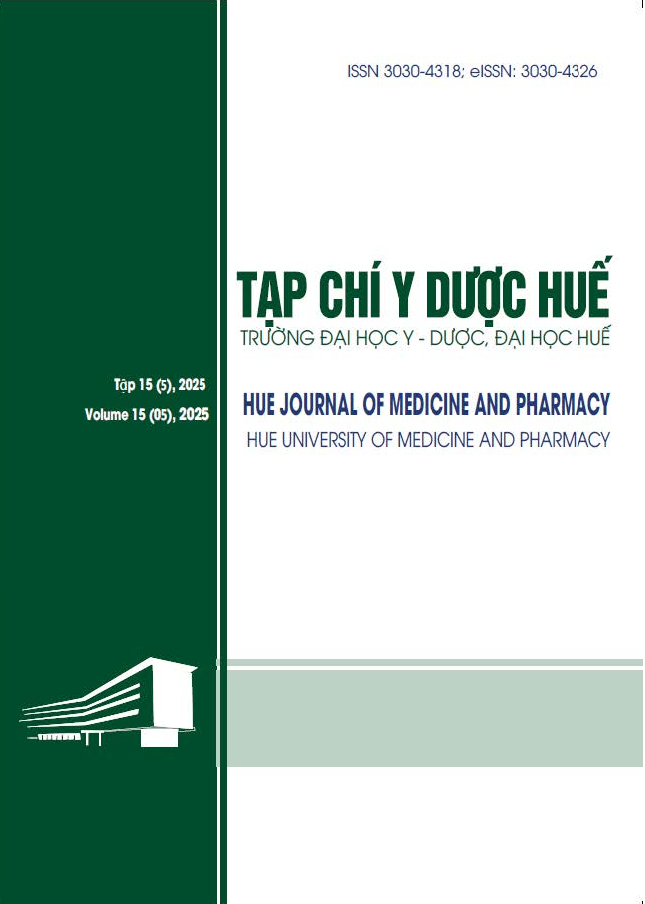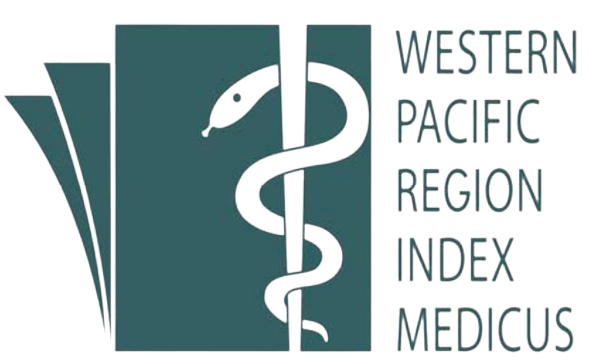Abstract
Background and Aims: NAFLD (Non-alcoholic fatty liver disease) can progress to liver fibrosis,cirrhosis,and hepatocellular carcinoma. Metabolic syndrome (MetS) is one of the main risk factors for NAFLD. Diagnosing NAFLD can be done through various methods, in which FibroScan can assess both the degree of liver steatosis and fibrosis simultaneously. The purpose of this study is to determine the prevalenceof NAFLD and theseverity of liver fibrosis using FibroScan in patients with MetS.
Materials and Method: This cross-sectional study was conducted at People’s Hospital 115 from February 2021 to February 2022. Patients with MetS who met the study criteria underwent FibroScan measurement. NAFLD was identified when CAP > 233 dB/m (steatosis > 5%). Data wereprocessed using SPSS 16.
Results: 188 MetS patients were included in thestudy,155 individuals suspected of having NAFLD underwent FibroScan. The prevalence of NAFLD detected by FibroScan was 67.6%. The rates of mild, moderate, and severe steatosis were 26.0%, 31.5%, and 42.5%, respectively. The prevalence of significant fibrosis, advanced fibrosis, and cirrhosis were 24.4%, 10.2%, and 7.1%, respectively. There was a low-level correlation between liver steatosis and liver fibrosis on FibroScan in MetS patients with NAFLD.
Conclusion: The prevalence of NAFLD in patients with MetS is relatively high. Our study encourages screening for NAFLD and evaluating the severity of liver fibrosis using FibroScan in patients with MetS.
| Published | 2025-09-30 | |
| Fulltext |
|
|
| Language |
|
|
| Issue | Vol. 15 No. 5 (2025) | |
| Section | Original Articles | |
| DOI | 10.34071/jmp.2025.5.29 | |
| Keywords | NAFLD, NASH, hội chứng chuyển hóa, xơ hóa gan, nhiễm mỡ gan, FibroScan, CAP NAFLD, NASH, metabolic syndrome, liver fibrosis, liver steatosis, FibroScan, CAP |

This work is licensed under a Creative Commons Attribution-NonCommercial-NoDerivatives 4.0 International License.
Copyright (c) 2025 Hue Journal of Medicine and Pharmacy
Younossi ZM, Koenig AB, Abdelatif D, Fazel Y, Henry L, Wymer M. Global epidemiology of nonalcoholic fatty liver disease-Meta-analytic assessment of prevalence, incidence, and outcomes. Hepatology. 2016;64(1):73-84.
Fan JG, Kim SU, Wong VW. New trends on obesity and NAFLD in Asia. J Hepatol. 2017;67(4):862-73.
Targher G, Byrne C, Lonardo A, Zoppini G BC. Non-alcoholic fatty liver disease and risk of incident cardiovascular disease: A meta-analysis. J Hepatol. 2016;65(3):589-600.
Iqbal U, Perumpail BJ, Akhtar D, Kim D, Ahmed A. The Epidemiology, Risk Profiling and Diagnostic Challenges of Nonalcoholic Fatty Liver Disease. Medicines (Basel). 2019;6(1).
Priyank J, Rohit P, Dubey TN, Jain DR. Prevalence of NAFLD (non-alcoholic fatty liver disease) in metabolic syndrome and their correlation with various biochemical and serologic parameters for early detection and detecting patients of lean Nash (Non-alcoholic steatohepatitis). International Journal of Medicine Research. 2018;3(2):24-8.
Leoni S, Tovoli F, Napoli L, Serio I, Ferri S, Bolondi L. Current guidelines for the management of non-alcoholic fatty liver disease: A systematic review with comparative analysis. World J Gastroenterol. 2018;24(30):3361-73.
Huang PL. A comprehensive definition for metabolic syndrome. Dis Model Mech. 2009;2(5-6):231-7.
Karlas T, Petroff D, Garnov N, Bohm S, Tenckhoff H, Wittekind C, et al. Non-invasive assessment of hepatic steatosis in patients with NAFLD using controlled attenuation parameter and 1H-MR spectroscopy. PLoS One. 2014;9(3):e91987.
Wong VW, Vergniol J, Wong GL, Foucher J, Chan HL, Le Bail B, et al. Diagnosis of fibrosis and cirrhosis using liver stiffness measurement in nonalcoholic fatty liver disease. Hepatology. 2010;51(2):454-62.
Kwo PY, Cohen SM, Lim JK. ACG Clinical Guideline: Evaluation of Abnormal Liver Chemistries. Am J Gastroenterol. 2017;112(1):18-35.
Jinjuvadia R, Antaki F, Lohia P, Liangpunsakul S. The Association Between Nonalcoholic Fatty Liver Disease and Metabolic Abnormalities in The United States Population. J Clin Gastroenterol. 2017;51(2):160-6.
Goyal A, Arora H, Arora S. Prevalence of fatty liver in metabolic syndrome. J Family Med Prim Care. 2020;9(7):3246-50.
Dyson JK, Anstee QM, McPherson S. Non-alcoholic fatty liver disease: a practical approach to diagnosis and staging. Frontline Gastroenterol. 2014;5(3):211-8.
Lee SH, Han K, Yang HK, Kim HS, Cho JH, Kwon HS, et al. A novel criterion for identifying metabolically obese but normal weight individuals using the product of triglycerides and glucose. Nutr Diabetes. 2015;5:e149.
Trần Kinh Thành. Luận văn bác sĩ chuyên khoa II: Tỉ lệ và đặc điểm bệnh gan nhiễm mỡ không do rượu ở bệnh nhân được phát hiện gan nhiễm mỡ trên siêu âm. Thành phố Hồ Chí Minh: Trường Đại học y khoa Phạm Ngọc Thạch; 2020.
Ekstedt M, Hagstrom H, Nasr P, Fredrikson M, Stal P, Kechagias S, Hultcrantz R. Fibrosis stage is the strongest predictor for disease-specific mortality in NAFLD after up to 33 years of follow-up. Hepatology. 2015;61(5):1547-54.
Leite NC, Villela-Nogueira CA, Cardoso CR, Salles GF. Non-alcoholic fatty liver disease and diabetes: from physiopathological interplay to diagnosis and treatment. World J Gastroenterol. 2014;20(26):8377-92.
Singh S, Allen AM, Wang Z, Prokop LJ, Murad MH, Loomba R. Fibrosis progression in nonalcoholic fatty liver vs nonalcoholic steatohepatitis: a systematic review and meta-analysis of paired-biopsy studies. Clin Gastroenterol Hepatol. 2015;13(4):643-54.
Paul J, Venugopal RV, Peter L, Shetty KNK, Sheti MP. Measurement of Controlled Attenuation Parameter: A Surrogate Marker of Hepatic Steatosis in Patients of Nonalcoholic Fatty Liver Disease on Lifestyle Modification - a Prospective Follow-up Study. Arq Gastroenterol. 2018;55(1):7-13.
Petta S, Wong VW, Camma C, Hiriart JB, Wong GL, Marra F, et al. Improved noninvasive prediction of liver fibrosis by liver stiffness measurement in patients with nonalcoholic fatty liver disease accounting for controlled attenuation parameter values. Hepatology. 2017;65(4):1145-55.






